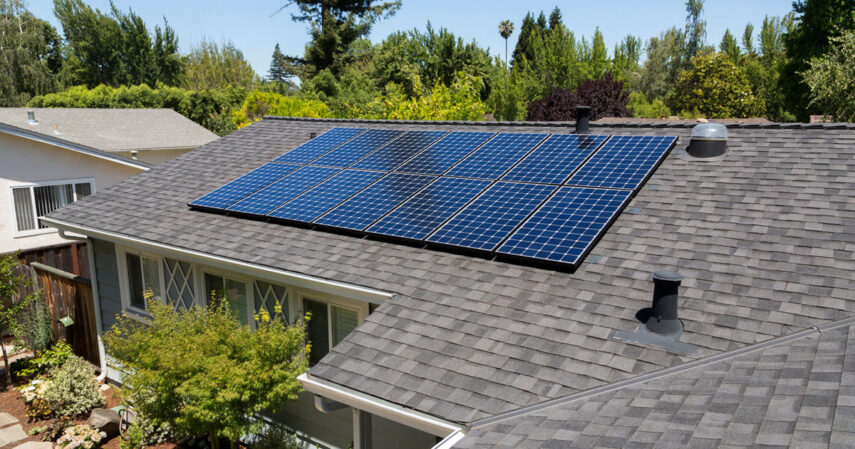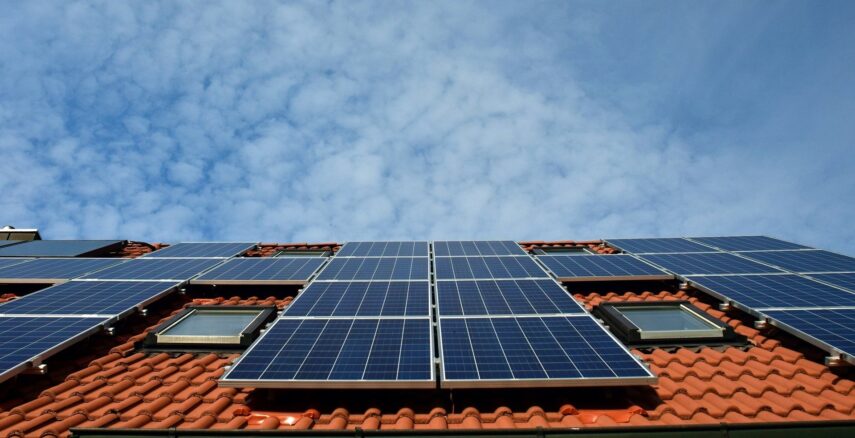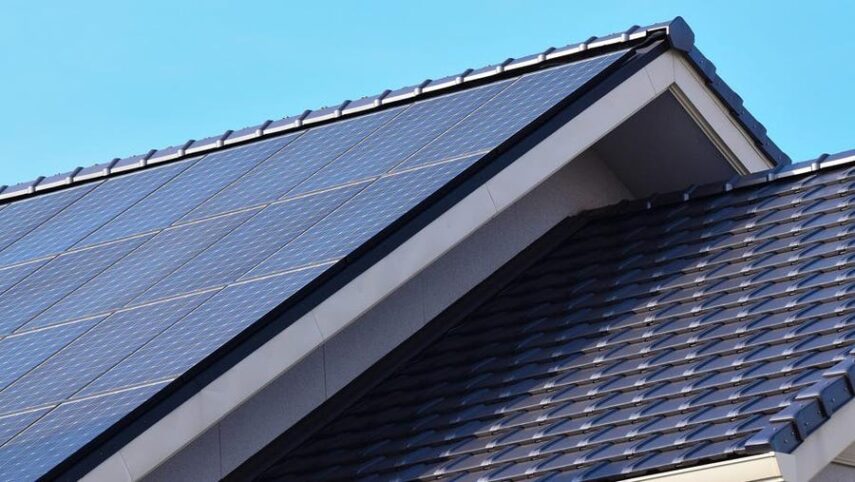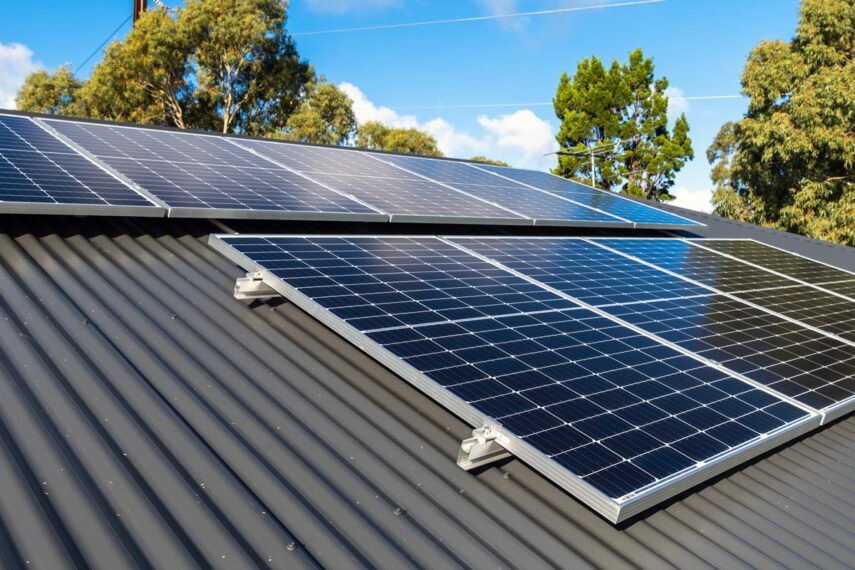Did you know that in 2021, the market for solar PV panels was worth USD 146.08 billion?
Energy prices are among the most significant expenses in any American home. That makes choosing a renewable energy source like solar power an easy choice when it’s time to start computing your total costs.
How many solar panels for a roof do I need?
Don’t worry; we have you covered. We’ve broken down everything you need to know as you learn about solar energy for the first time. Here, we outline the precise answer you seek to your question, “how many solar panels are for a house?”
The Size and Angle

Depending on the size of the roof and the angle at which it faces the sun, more or fewer solar panels may be required. Generally speaking, the larger the top and the steeper the curve, the more solar panels you’ll need to power your household or business. Ideally, the roof should have an angle between 30° and 50° to ensure optimal sun exposure and maximize power generation.
You’ll also need to factor in the average sunlight hours in your area to be sure that you have an adequate number of solar panels. A qualified installer can provide you with a comprehensive assessment of how many solar panels your roof requires.
Orientation
The orientation of solar panels on a roof may drastically affect their performance. It can either maximize their benefits or cut them short.
Generally speaking, the best orientation for residential roof-mounted panels is south facing. This helps to maximize solar energy production in the afternoon. East and West-facing panels also offer great potential for solar energy production, just not to the same degree as south-facing panels.
North-facing panels can benefit some users but should be avoided since the boards will not receive direct sunlight in the afternoon. When deciding the best orientation for your solar panels, many factors should be considered.
The Wattage of the Panels

The average home requires about 6-8kW of energy, so that power needs to be generated through solar panels. Usually, a single solar panel will produce 270-300 watts. Therefore, to reach the 6-8kw requirement, you will need around 20-30 solar panels on your roof.
Remember that the wattage of each panel can vary, so you will need to work out the total wattage to ensure you have enough boards for your roof.
Installing enough solar panels to generate the necessary wattage will result in the most cost savings and energy you will generate.
Total Power Output
If your home’s electricity use is relatively low, such as under 2,000 watts, you may require only eight or nine solar panels. On the other hand, if you need a total of 10,000 watts or more, you’ll need to install more than one hundred individual solar panels.
If you’re unsure of your home’s electricity usage, take an energy audit of your house to pinpoint the exact number of solar panels needed for your rooftop. Additionally, the area of your roof, the optimal angle for solar panels, and other environmental factors can also affect the number of solar panels you need for your home.
Ultimately, you can choose the total number of solar panels needed for your roof by planning and determining your energy needs.
The General Climate of the Area

The number of panels that can fit on a roof depends on the roof’s size and the area’s climate. In areas with high levels of solar radiation, a roof may be able to fit more panels; however, in areas with low sunlight intensity, more space will be needed to provide the required amount of commissions.
When looking at the climate, it is essential to consider the type of solar panel that will be installed. Each may have different requirements, and other types may be more suitable depending on the environment.
Therefore, before deciding on an appropriate number of panels for a roof, you should ensure that the top and the general climate conditions are suitable for the type of panel used.
Type of Roof Material
For asphalt shingle roofs, installers may recommend installing fewer solar panels because the shingles may need to be replaced. On the other hand, it can often support more significant solar panels. Clay tile and slate roofs also offer improved performance and longevity.
According to EnergyAustralia, for asphalt shingle roofs, installers may recommend installing fewer solar panels because the shingles may need to be replaced. On the other hand, it can often support more significant solar panels. Clay tile and slate roofs also offer improved performance and longevity.
In addition, the amount of energy necessary to power a building can also influence the number of solar panels required, how they are mounted, and which type of inverters are used. If you are considering solar panel installation, then read more for the useful information.
Budget Available
Depending on your budget, you can purchase solar panels that range in size, power output, and efficiency. You should install the most significant solar panels your budget allows to achieve incredible savings. This is because the more solar panels you install, the more influential the power output, meaning you will benefit from a higher return on investment.
However, if your budget is limited, you will not be able to install a large number of panels. Even installing smaller meetings can be beneficial as you can keep adding more as your budget allows.
Roof Geographic Orientation

If the roof faces south, it will receive more sun exposure and require fewer panels to generate the same amount of power. If the top faces east or west, it will need more panels. Additionally, the roof’s pitch will also impact the number of panels needed, as steeper roofs require more panels to catch the sunlight adequately.
In addition, the type of solar panel used and its wattage should also be considered. With careful planning and attention to detail, one can ensure enough solar panels are installed to meet one’s energy needs.
Local Utility Regulations
Jurisdictions have rules regarding the maximum generating capacity of rooftop solar arrays. It’s essential to calculate the wattage output allowable under the regulations when determining how many solar panels are necessary. Additionally, any incentives or cost savings need to be weighed.
Some jurisdictions may also require specific permits or paperwork before installing a system. To determine the correct number of solar panels for your roof, it’s essential to understand the local regulations and incentives.
Knowing How Many Solar Panels You Need
It is essential to determine your exact energy needs and how much space is available for solar panels on your roof before you decide how many solar panels you should install. Use resources such as this article, professional insights, and solar calculators to determine the number of solar panels for your home.
For more helpful tips, check out our site today!







